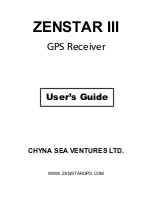
SHOUT nano 100 User Guide Version A
Document Number: 451-22013-001A
20 of 44
“Time Between Reports” (^TBR) and “Time to Keep Trying” (^TTKT) adjust how often to send
reports and how long the SHOUT nano 100 tries to achieve a successful report transmission.
Decreasing the “Time Between Reports” increases data points for more detailed situational
awareness and increasing the “Time to Keep Trying” improves the chances of transmission
success. Both options also directly affect the SHOUT nano 100 power consumption.
For supporting message-receiving scenarios, referred to as “Callable,” the SHOUT nano 100
Iridium modem can be set to be always on by using the ^CAL command. This configuration
prevents the SHOUT nano 100 device from sleeping and greatly increases power consumption.
To facilitate power management and time to acquire location, configure the SHOUT nano 100
to control the power state of the GNSS module. The module can be set to be always on using the
command ^GAO, which prevents the GNSS from turning off after obtaining a valid fix.
While in tracking mode, the SHOUT nano 100 can load tracking profiles dynamically. By
default, there are two tracking profiles set aside for normal tracking and emergency tracking.
Typically, when tracking mode starts, the tracking profile for normal tracking is loaded, specified
by the "Tracking Profile Normal" (^TPN) setting. When the emergency mode is triggered, tracking
mode switches to using the tracking profile for emergency tracking, specified by the "Tracking
Profile Emergency" (^TPE) setting. This allows the SHOUT nano 100 to be configured to operate
differently when there is an external stimulus.
Tracking mode also loads a different tracking profile if geofences are enabled and the SHOUT
nano 100 enters or exits a geofence. Priorities are assigned to the different stimuli and the
SHOUT nano 100 only switches to the associated tracking profile if it has a higher priority.
Emergency tracking has the highest priority, Geofence is the second highest, and normal tracking
is the default.
4.3
C
ALL
-O
UTS AND
T
URN
-O
N
D
ELAY
Using an onboard real-time clock, the SHOUT nano 100 can be configured to send daily call-
out reports at specified UTC times. These call-out reports are in addition to tracking reports sent
at a predefined tracking interval and they are indistinguishable from each other. Call-outs can be
used as a heartbeat to determine, if the device is still operational (refer to the SatTerm for
SHOUT nano 100 Manual [5].
















































